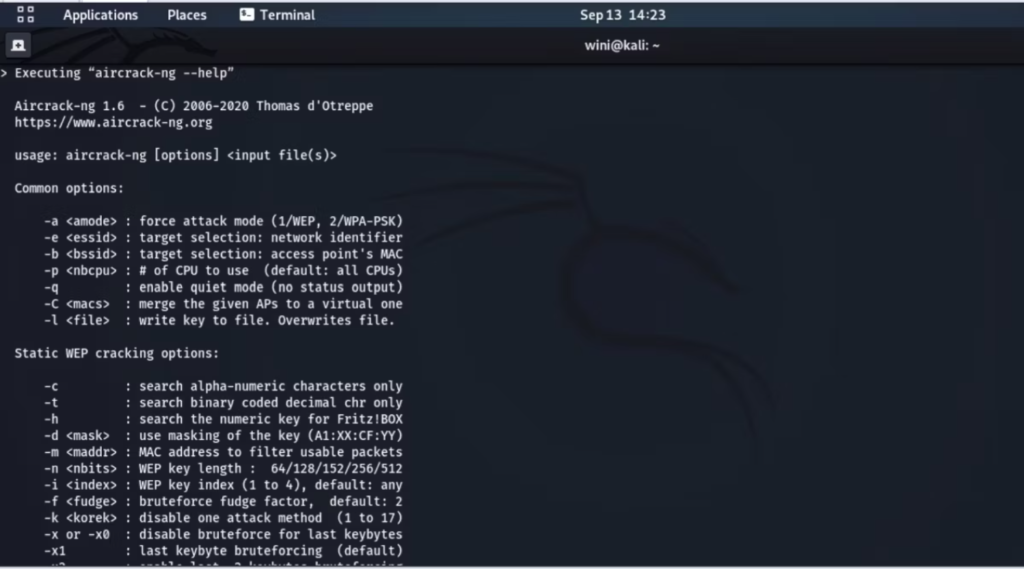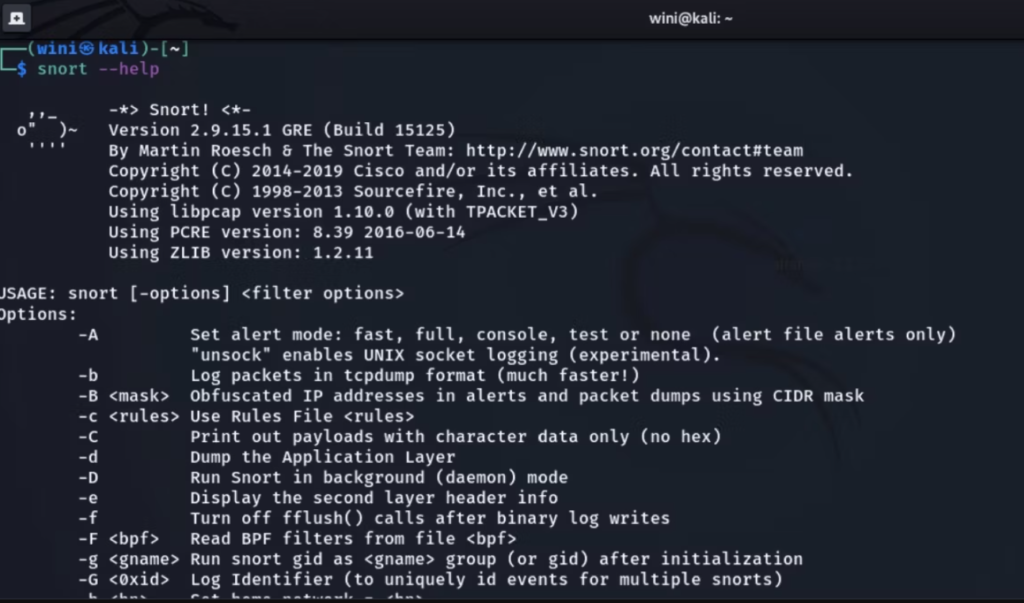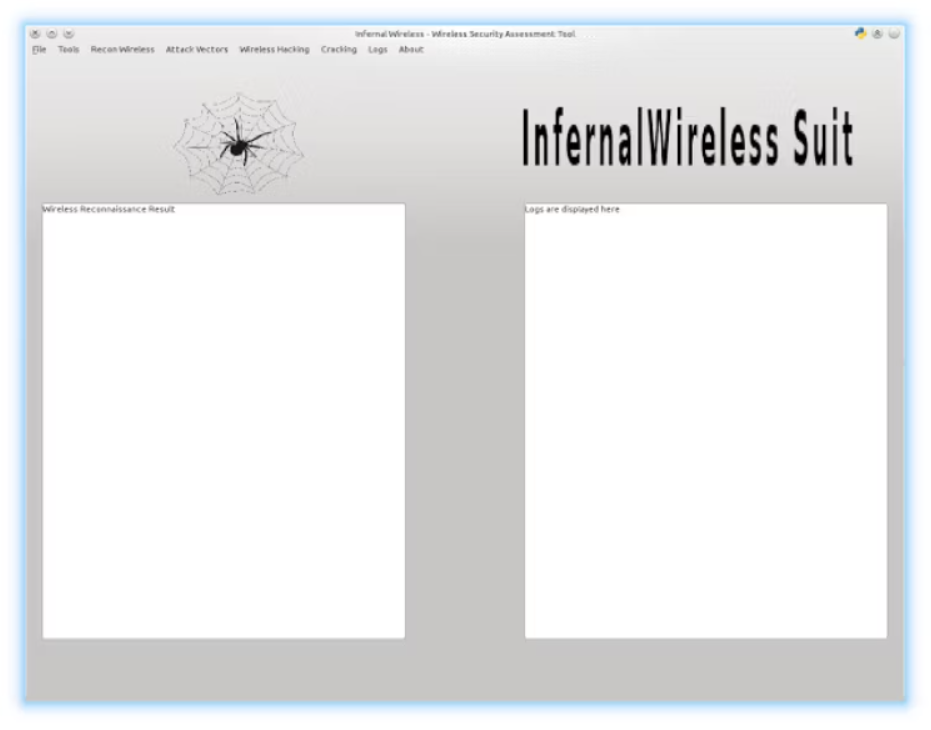Today we will learn about The Best Wireless Penetration Testing Tool for Linux. Securing your wireless network from intruders is important. Wi-Fi penetration tools help in cyber security analysis by going deeper into the details of the security framework. Before hackers use these tools to gain access to your whole system, it is a wise decision to check or test your network for any such vulnerabilities.
To this end, many organizations have started using Wi-Fi penetration testing tools to uncover vulnerabilities in their wireless networks. Read on to learn some powerful and popular Wi-Fi hacking tools.
Wireless Password Crackers
1. Aircrack-ng

Aircrack-NG is probably the most preferred choice for hackers to break into Wi-Fi networks and access passwords for ethical or unethical use. It is popular for people who want to crack both WEP and WPA passwords.
Aircrack’s working principle is based on capturing network packets using a series of foolproof algorithms. The tool collects enough packets to recover passwords through an optimized FMS attack. It supports most wireless adapters and promises to provide high success rates.
2. Reaver

Reaver is a very popular open-source wireless network penetration tool that should be on top of every pen tester’s toolkit list. This tool applies brute force attacks to steal passwords on WPA and WPA2-protected wireless networks.
River source code is freely available on Google, but you should read its usage guide before getting hands-on with the tool. This Wi-Fi hacking tool is still in use, although it hasn’t been updated in quite some time.
3. Hashcat

Hashcat is the world’s fastest password cracker. It is based on an in-kernel rule engine which gives you the flexibility to use it on some popular operating systems. Operating systems such as Linux, Windows and macOS widely support the use of HashCat. One of the primary attention-grabbing USPs of HashCat’s password candidate brain function tool.
It comes with an in-built benchmark system and an internal thermal watchdog. Also, it supports Hex-Salt, Hex-Charset, Automatic Performance Tuning, Interactive Pause/Resume, Distributed Cracking, Multi-Device and many more features.
4. Wifiphisher

Wifiphisher is another great tool to crack passwords and create fake access points. Penetration testers can use this type of fake access point for red team engagement and Wi-Fi security testing.
The tool enables you to quickly gain middle ground against Wi-Fi access clients. The tool supports customized web phishing attacks, infects stations with malware and performs automated phishing attacks based on your preferences and needs.
It is freely available and preloaded into Kali, a specialized penetration-testing Linux distro. Hackers use this tool to steal Wi-Fi passwords.
5. CoWPAtty
Joshua Wright is the owner/founder of Cowpatty. It works on the principle of automatic offline dictionary attack. The tool has an auditor CD which makes it easy to use the tool to hack WPA-PSK networks.
The tool is easy to use but works very slowly, which is a notable drawback. It runs on a wordlist containing passwords used in the attack. As a hacker, you cannot hack the network, unless the password is found in the password list.
While this process may make the whole idea safer, it’s a slow tool, which is soon dropped from every Pinterester’s wish list.
Network Scanner and Wi-Fi Hacker
6. AirSnort

AirSnort ranks high, especially since it offers a suite of freely available Wi-Fi intrusion tools for WEP networks. One major drawback is that it only works with WEP networks, which is a bit annoying considering its list of useful features.
After AirSnort collects enough network packets, it performs encryption keys, tests, and composes. It is an easy-to-use operating system for Linux and two users to test. Unfortunately, like River, this set has no updates for some things.
7. Infernal-Twin

The primary purpose of creating a Hell-Twin pen-testing tool is to automate the Hell-Twin attack by creating access points. It sniffs the network communication of the access points and gets the desired results for the users.
Attackers set up fake Wi-Fi access points that promise to offer Internet service; However, the reality is different, because it works by sniffing the user’s traffic. Fake access points pretend to be genuine pages for network access, where they simply try to steal your network’s Wi-Fi credentials and other important data. It comes with all the necessary features needed to hack a wireless network. Whether a person is using WPA, WPA2, or WEP, rest assured that Infernal-Twin will give you success.
Some features include:
- SSL strip
- Note taking functionality
- Network Mapping
- MITM
- Hacking WPA/WPA2/WEP
- Wireless social engineering
- GUI wireless security assessment
The Infernal-Twin tool is updated regularly; The author announced that the next release will give tShark more power to collect victim credentials and other data through log file parsing. These features make it a great tool for getting the most out of your Wi-Fi pen-testing assignments.
8. Wireshark

Wireshark is a widely used and highly trusted network protocol analyzer available freely as an open-source tool. As a Pinterester, you can get microscopic-level details about your network through this tool.
Wireshark collects packets and further analyzes them to provide detailed security status. It offers multi-platform support for some popular operating systems like macOS, Linux, and Windows.
Its rich VoIP analytics and in-depth inspection of hundreds of protocols make it worthwhile for various public, private and non-profit organizations. Tools may not provide a plaintext passphrase in some cases, but it’s still useful for sniffing and capturing live data. Oudel Inc
Additionally, ethical or unethical hackers can use it for Bluetooth, Ethernet, USB and other networks in addition to Wi-Fi. People with little to no knowledge of network protocols may feel unable to use this tool.
Finding the Best Penetration Testing Tools for Your Wi-Fi
Use each of these tools to crack Wi-Fi passwords or monitor your network traffic While each tool has its own set of features, you need to decide which feature best suits your immediate needs.
If you don’t want to spend time installing every tool on your system, you can switch to a penetration-tested Linux distribution.
